African American Children Literature
A chair for my Mother

(Williams, 1998)
Note: Acclaimed author/illustrator Vera Williams tells of a young girl, who along with her waitress mother, saves coins in a big jar in hopes that they can someday buy a big, new, comfortable chair for their apartment, the kind of chair her mother deserves after being on her feet all day in the Blue Tile Diner. Into the jar also goes the money Grandma saves whenever she gets a bargain at the market.
What Socks only
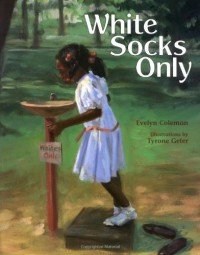
Note: This theme fits the book because the little girl viewed the sign on the water fountain differently than what it actually meant. When the old white man came and pushed her off the step stool and scolded her, she did not understand what she did wrong. She interpreted that the sign "Whites Only" meant the color of her shoes, and not the color of her skin. As people gathered around the water fountain, they realized that the girl misinterpreted the sign and soon everyone started taking off their shoes as well. Everyone around the fountain, black and white, had different colored socks on and proceeded to drink from the fountain. The theme statement "Judging people by skin color is as thoughtless as judging people by the color of their socks," intertwines the main event of the story, White Socks Only.
He's Got the Whole World in His Hands
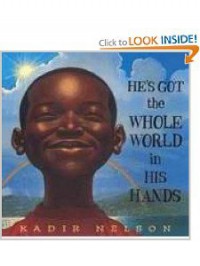
(Nelson, 2005)
Note: Through sublime landscapes and warm images of a boy and his family, this adaptation of the beloved folk song creates a dazzling, intimate interpretation that rejoices in the connection of people and nature.

(Levine & Nelson, 2007)
Note: A stirring, dramatic story of a slave who mails himself to freedom by a Jane Addams Peace Award-winning author and a Coretta Scott King Award-winning artist.Henry Brown doesn't know how old he is. Nobody keeps records of slaves' birthdays. All the time he dreams about freedom, but that dream seems farther away than ever when he is torn from his family and put to work in a warehouse. Henry grows up and marries, but he is again devastated when his family is sold at the slave market. Then one day, as he lifts a crate at the warehouse, he knows exactly what he must do: He will mail himself to the North. After an arduous journey in the crate, Henry finally has a birthday, his first day of freedom.
Big Mama's
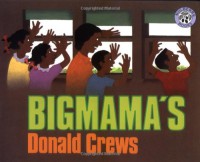
(Books, 1998)
Note: When he visits Bigmama's house in the country, Donald Crews finds his relatives full of news, and the old place and its surroundings just the same as the year before.
Freight Train

(Crews, 1989)
Note: When a train races by on a track, how many different cars are there? And in how many colors? If you look at the back first, you'll find a bright red caboose. Ahead of it is an orange tank car. There's a green car carrying cattle, a purple boxcar with dry goods, and at the very front of the train, with churning wheels and a chimney smoking, is the mighty black steam engine.The train moves in a rainbow blur through tunnels, past cities, through day and through night, until it passes completely from view; its only remaining trace is a cloud of steam that it leaves behind, and its thunderous roar you can almost hear as it runs off into the distance.Named a Caldecott Honor Book in 1978, Donald Crews' book evokes the power and the movement of a passing freight train even for someone who has never had the opportunity to watch one go by. His simple, bold colors make as much noise the train cars they enhance. With its unstoppable movement and power, this Freight Train is sure to pull even the youngest imagination forward.
Shortcut

(Crews, 1997)
Note: Children taking a shortcut by walking along a railroad track find excitement and danger when a train approaches.
Freedom Summer

Note: John Henry swims better than anyone I know.He crawls like a catfish,blows bubbles like a swamp monster,but he doesn’t swim in the town pool with me.He’s not allowed.This stirring account of the "Freedom Summer" that followed the passage of the Civil Rights Act of 1964 powerfully and poignantly captures two boys' experience with racism and their friendship that defies it. A picture book for all ages.
the Patchwork Quilt
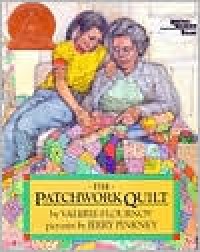
(Flournoy, 1985)
Note: Tanya loves listening to her grandmother talk about the quilt she is making from pieces of colorful fabric from the family clothes: an eventual heirloom to represent each person and the important events of their lives together. When Grandma becomes ill, Tanya decides to finish the masterpiece herself, and soon the rest of the family pitches in to help, finding comfort and connection by completing the squares and stitches.
What A Wonderful World

(Weiss, Weiss, Thiele, & Bryan, 1996)
Note: What simpler way could there be to express to children the beauty and the harmony in the world around them than through the lyrics of this song by George David Weiss and Bob Thiele, made famous by the great Louis Armstrong? And what better visual accompaniment than the bright colorful artwork by award-winning Ashley Bryan depicting children of many backgrounds (and Louis Armstrong himself) performing a puppet show that brings the lyrics to life.
Girls Hold up The World

Note: Actress Jada Pinkett Smith--wife of superstar Will Smith--lovingly captures the strength, unity, and beauty that live in girls in this poignant photographic book."We are sisters of this Earth -- members of one powerful tribe. /Every color, shape, and size, we're united by beauty inside." Artistic photographs enhance the positive message of Jada Pinkett Smith's inspiring poem. A renowned actress and loving mother, Smith brings warmth and heart to this celebration of young women. While so many girls today struggle with self-doubt, this poem focuses on the power ALL girls have within them, regardless of color or creed. This is the perfect book for mothers, daughters, sisters and friends to give and to share again and again.
When I am Old with you
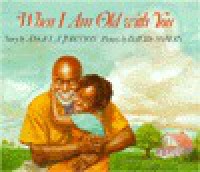
Note: "A small child imagines a future when he will be old with his Granddaddy and will sit beside him in a rocking chair and talk about everything... The poignant reality that time will never allow these two to coexist at the same age is softened by the fact that they do not have to be the same age in order to share happy times... The African American child and grandfather are...recognizable to anyone who has ever shared the bond of family love across generations."
Ruby Bridges Goes to School

(Bridges, 2009)
Note: The extraordinary true story of Ruby Bridges, the first African-American child to integrate a New Orleans school — now with simple text for young readers!In 1960, six-year-old Ruby Bridges walked through an angry crowd and into a school where she changed history.This is the true story of an extraordinary little girl who helped shape our country when she became the first African-American to attend an all-white school in New Orleans. With simple text and historical photographs, this easy reader explores an amazing moment in history and the courage of a young girl who stayed strong in the face of racism.
Working Cotton

(Williams & Byard, 1997)
Note: This child's view of the long day's work in the cotton fields, simply expressed in a poet's resonant language, is a fresh and stirring look at migrant family life.
The Story of Ruby Bridges
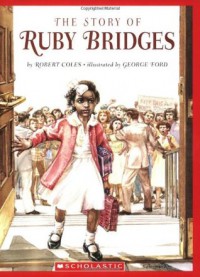
(Coles & Ford, 1995)
Note: This beautiful picture book, illustrated by Coretta Scott King Award-illustrator George Ford, and written by Pulitzer Prize-winning author Robert Coles, tells the true story of six-year-old Ruby Bridges. In 1960, Ruby, a young African-American girl, entered a whites-only school in New Orleans. Even though she had to pass through crowds of angry protesters, Ruby bravely walked into the school. Every day for months, Ruby persevered. White parents pulled their children out of the school, and Ruby and her teacher were alone in the classroom. Still, Ruby and her family would not give in.
A Picture Book of George Washington Carver
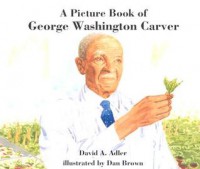
(Adler & Brown, 2000)
Note: George Washington Carver--who was born a slave, educated erratically in his younger years, and rejected at Highland University because he was black--ultimately used his life to improve the lives of other Southerners and blacks through his pioneering experience.



